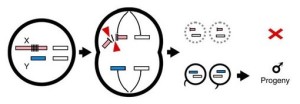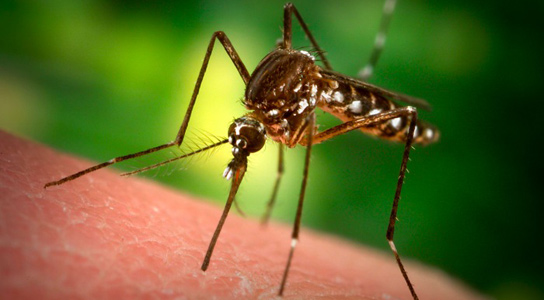Seeking “a cheap and effective way to eliminate malaria from entire regions,” a team at Imperial College London’s Department of Life Sciences have modified mosquitos to produce sperm that creates 95 percent male offspring, leading to hopes that Malaria–which still kills 627,000 people per year, according to World Health Organization estimates–will be completely eradicated.
The report, “A synthetic sex ratio distortion system for the control of the human malaria mosquito,” was published in Nature Communications Tuesday. The report represents six years of research.
The Imperial College team tested their proceedure in five labratory cages. Genetically modified mosquitoes were introduced into the cages already inhabited by regular mosquito populations. In four of the five cages, all mosquitoes were eliminated within six generations due to lack of females.
“What is most promising about our results is that they are self-sustaining,” said lead researcher Dr. Nikolai Windbichler. “Once modified mosquitoes are introduced, males will start to produce mainly sons, and their sons will do the same, so essentially the mosquitoes carry out the work for us.”
 The process of genetic modification used involves inserting a DNA cutting enzyme called l-Ppol into the mosquitoes. The enzyme cuts the DNA of the X chromosome during sperm production. Therefore, during mating, almost no X chromosomes exist to pass on, so offspring usually bear the XY pair, and are born female.
The process of genetic modification used involves inserting a DNA cutting enzyme called l-Ppol into the mosquitoes. The enzyme cuts the DNA of the X chromosome during sperm production. Therefore, during mating, almost no X chromosomes exist to pass on, so offspring usually bear the XY pair, and are born female.
The Imperial College team explain the process this way: “We combine structure-based protein engineering and molecular genetics to restrict the activity of the potentially toxic endonuclease to spermatogenesis. Shredding of the paternal X chromosome prevents it from being transmitted to the next generation, resulting in fully fertile mosquito strains that produce [greater than] 95% male offspring.”
The idea put in practice by the Imperial College team is not new, but experiments in the area were previously hampered by lack of knowledge of the genetic makeup and mode of action of naturally occurring sex distorters and the incidence of co-evolving suppressors.
By Sid Douglas
